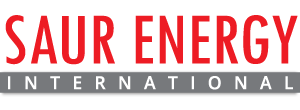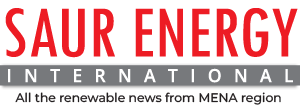The Middle East is ramping up investment in clean energy even as it maintains a stronghold in global fossil fuel markets, according to the International Energy Agency’s (IEA) latest “World Energy Investment 2025” report.
The report highlights that while the Middle East continues to allocate the bulk of its capital to oil and gas—set to reach USD 130 billion in 2025, or 15% of global upstream spending—the region is also witnessing a notable rise in low-emissions energy investments. Clean power investment in the region has nearly reached parity with fossil fuelled power investments, and is projected to grow by 45% over the next decade, largely driven by wind energy projects.
In 2025, the region is expected to invest around USD 9 billion in clean electricity generation, a substantial increase over the past decade. The share of renewables and nuclear in the Middle East’s power mix has doubled since 2015 to nearly 15%, with natural gas still providing two-thirds of total electricity.
Despite being a fossil fuel powerhouse—providing 30% of global oil and 17% of gas production in 2024—the IEA notes that low-emissions technologies are gaining momentum, supported by national oil companies such as Saudi Aramco and ADNOC (UAE), which have doubled their clean energy spending between 2022 and 2024.
“The rise in low-emissions power investment reflects a strategic pivot, not a replacement,” the report stated, noting that fossil fuel subsidies across the region still significantly outweigh power sector investment.
Major state-backed and international projects are shaping this shift. In Saudi Arabia, Aramco is leading upstream investment with nearly USD 40 billion committed in 2025 and is actively expanding into low-emission technologies and international partnerships. The UAE’s ADNOC is part of a growing cohort of national oil companies scaling up clean energy financing. Qatar has also quadrupled foreign investment in its LNG sector and is developing massive new liquefaction capacity.
While fossil fuel remains dominant, the IEA underscores growing activity in renewables project financing across the region—albeit with sporadic growth. The Middle East is increasingly attracting Chinese investments in solar, electric vehicles, and batteries, and is leveraging public and blended finance to scale clean energy projects, particularly in utility-scale renewables.
Countries such as Oman and Iraq continue to draw substantial foreign capital for upstream energy, while others like Jordan and Kuwait rely predominantly on state-owned enterprises. Despite missing or incomplete risk data for countries like Iran, Syria, and Yemen, the broader regional outlook shows signs of diversification.
The IEA also points to the region’s push into international mining and critical minerals processing, with over USD 20 billion in outbound investments led by Saudi Arabia and the UAE, aimed at securing strategic supply chains for the energy transition.
Still, the agency warns that the Middle East faces a growing supply deficit in fossil fuel trade under the Announced Pledges Scenario (APS), requiring USD 140 billion in fossil imports around 2030 and increasing geopolitical vulnerabilities.
As the world moves toward cleaner energy systems, the Middle East’s evolving investment mix reflects both the challenges of transition and the opportunities for long-term sustainability in a region traditionally rooted in hydrocarbons.


